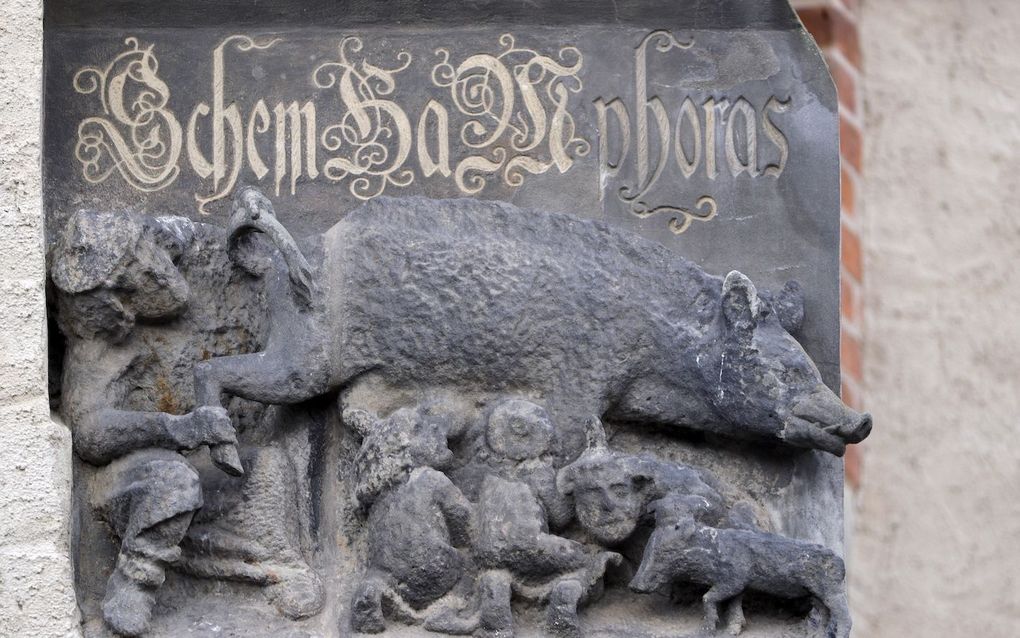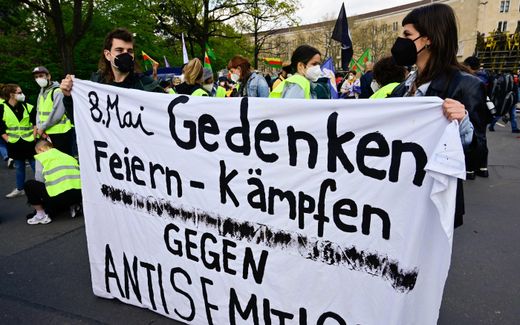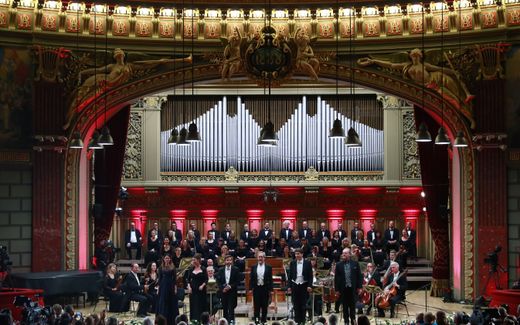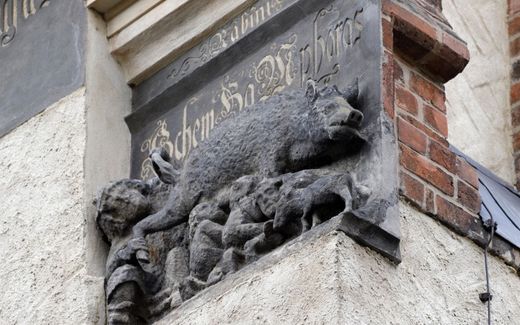Judge decides that anti-Semitic monument in Wittenberg can stay

The Jewish sow in Wittenberg. Photo EPA, Felipe Trueba
Central Europe
The anti-Semitic monument at the Wittenberg City Church can stay there. That was decided by the Federal Court of Justice in Karlsruhe.
The so-called “Judensau” (Jewish pig) is from the 13th century and shows a sow on whose teats Jews suckle. This was intended to humiliate Jews in the Middle Ages.
In 1988, the church parish had a floor slab installed in front of the “sow”, with which it distanced itself from the anti-Semitic relief. An information board has also been set up there in the meantime.
The Jew Michael Düllmann (Bonn) had complained about the sandstone relief because he felt insulted by the picture. The Court dismissed this complaint on Tuesday. A removal could not be demanded since there was no “current infringement”. The parish had removed the originally infringing condition of the relief through a base plate and a display with explanatory text. In this way, the community distances itself from the contents of the historical sculpture.
The verdict is of nationwide importance because there are also similar abusive sculptures at about 50 other churches. According to media reports, Düllmann now wants to go to the Federal Constitutional Court, also in Karlsruhe.
Both the evangelical press agency Idea and the Roman Catholic weekly Die Tagespost report about the verdict.
Garth: Scandal
Wittenberg city church pastor Alexander Garth told Idea that the parish would continue to work on distancing. The abusive sculpture is a “disgraceful mark that symbolises centuries of Christian-motivated anti-Judaism.” “As Christians, we must give a clear message to the Jewish people. We must do something about it that speaks louder than this disgraceful mark”, says the pastor.
The regional bishop of the Evangelical Church in Central Germany (EKM), Friedrich Kramer (Magdeburg), said in a statement from the regional church that the judgment creates the necessary clarity to advance the further development of the memorial: “There is a consensus that the current information board and the memorial in the form of a floor slab no longer meet the requirement to break the effect of the anti-Jewish abusive sculpture on the façade.”
Foundations of Reformation theology
The anti-Semitism commissioner of the German Protestant Church (EKD), Christian Staffa (Berlin), declared: “We must work intensively on the anti-Jewish images in our tradition and actively oppose them.” These could be, for example, Bible interpretations critical of anti-Semitism or joint forums with Jews at the German Protestant Church Convention. “As a Protestant church, we have to go to the foundations of the theology of the Reformation to track down the anti-Jewish content there,” says Staffa. The ruling shows that the dispute over such abusive sculptures cannot be solved legally.
The President of the Central Council of Jews in Germany, Josef Schuster (Würzburg), called the verdict comprehensible: “However, I cannot follow the reasoning of the BGH insofar as, in my opinion, neither the floor plate nor the explanatory oblique display contains an unambiguous condemnation of the anti-Jewish pictorial work. However, the Church should clearly acknowledge its guilt and condemn its centuries-long anti-Judaism,” Schuster said.
Related Articles






